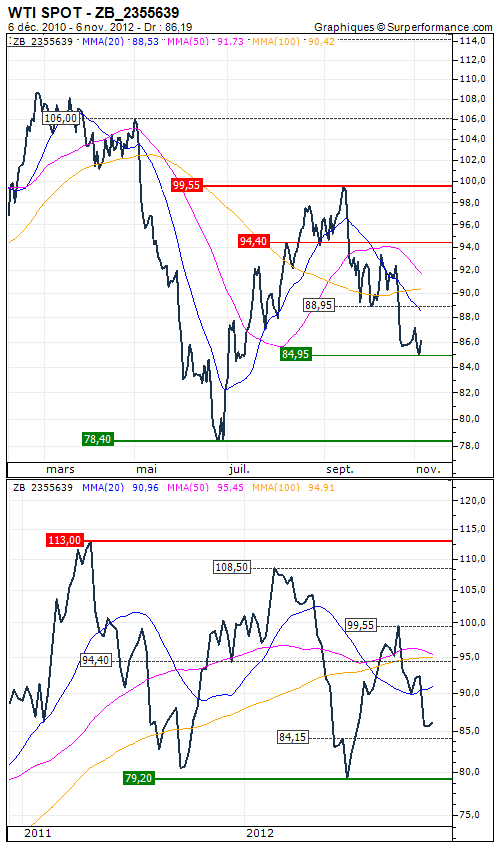WTI : No real trend for the mid and long term
By Rodolphe Steffan
Indeed, oil prices have fallen back more than 10% since September erasing their net rise in the summer. The risk of cold weather in the Northeaster United States, the U.S. presidential election, or the decline in crude inventories failed to reverse the downward pressure on oil prices. The commodity finally found support on their 80/85 dollars annual level. In addition, oil prices are technically impacted by a strong dollar. The currency has remained near its highest level since the beginning of October as the last NFP reassured investors.
This week, oil prices rebound on their 80/85 dollars long term support. The crude oil market is boosted by Obama's victory. The president shows support to the FED monetary policy. The injection of liquidity into the economy stimulates commodity prices. If investors remain cautious, oil prices are also supported by renewed tensions on the Yemen and Saudi Arabia border, reviving geopolitical concerns in the Middle East.
In addition, the rebound in crude prices was fuelled by fears of tight supply on the east coast of the United States, where last week hurricane Sandy had disrupted oil refineries, at a time when temperatures cool in the region. In this context, investors will pay attention Wednesday to weekly figures from the U.S. Energy department.
Technically, the short-term dynamics remains bearish in daily data below the USD 90 level which refers to the 20-day moving average. A break above this resistance will allow a continuation of the rebound towards USD 95 and 100. In weekly data, investors keep on trading crude oil in the USD 80/110 range as the economic situation was dominated by the U.S election. We will wait for the exit of this trading range to take positions in order to benefit from a long-term trend.








